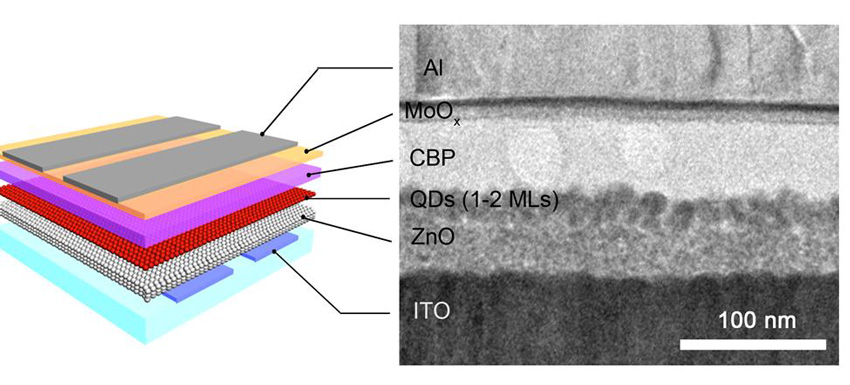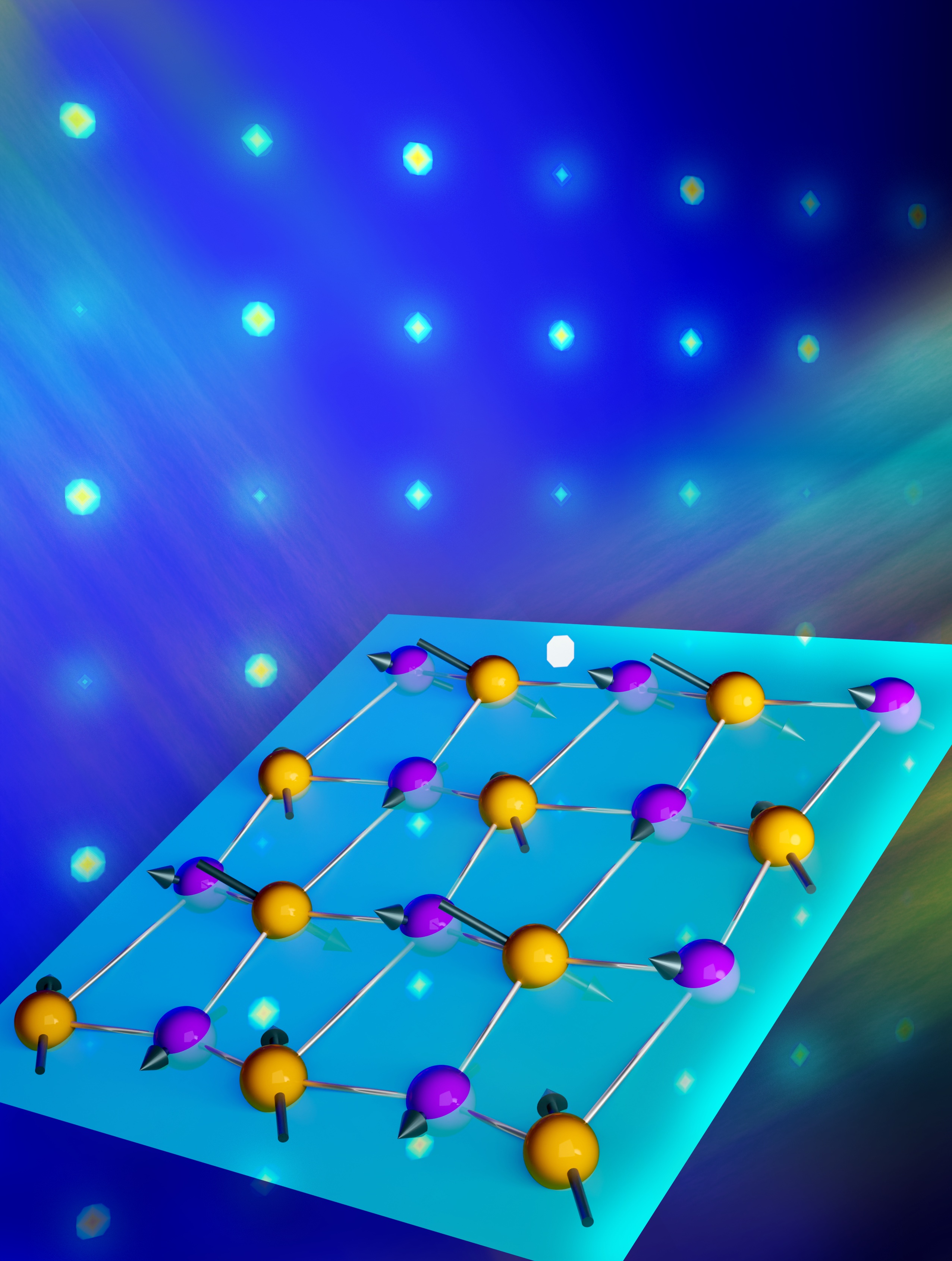Improving Quantum Dot Light Emitting Diodes: One Step Closer to Lighting Up Your Room
Nanoscale engineering boosts the performance of quantum dot light emitting diodes.

The Science
Spectroscopic studies along with systematic device performance characterization of operational quantum dot light emitting diodes (QD-LEDs) showed the main factor responsible for the reduction in efficiency is an effect called Auger recombination where energy is lost to heat instead of being converted and emitted as light (or photons). Based on this realization, the researchers developed nanoengineering strategies of the QDs structure to suppress the energy loss resulting in increased light emission and improved brightness.
The Impact
After identifying factors that presently limit QD-LEDs efficiency, the researchers provided practical solutions for avoiding the current problems. These options could substantially improve these emerging devices’ performance to the point where it meets the requirements for commercial products.
Summary
A dramatic improvement in lighting efficiency is possible by replacing traditional incandescent bulbs with light-emitting diodes (LEDs) where current is directly converted into photons via the process of electroluminescence. Current LED technology produces devices are efficient and produce bright light, but are expensive to fabricate. Chemically-synthesized quantum dots (QDs) are attractive materials for the realization of next-generation lighting and display technologies because material synthesis is inexpensive and easily scalable. Unfortunately existing QD-LEDs devices are still less efficient than commercially available LEDs. By conducting spectroscopic studies on operational QD-LEDs, researchers at Los Alamos National Laboratory (LANL) have established that an important factor limiting the performance of these devices is an effect called Auger recombination. In this process, the energy from recombination of an excited electron and hole is transferred to an excess charge and subsequently dissipates as heat instead of being emitted as a photon. To circumvent the problem, LANL scientists demonstrated two different nanoengineering strategies: 1) by suppressing Auger decay through confinement-potential engineering, or 2) by incorporating an additional outer shell on top of the QDs to help balance electron and hole injection currents to better control the flow of extra electrons into the dots themselves. Use of either type of QDs enhanced peak emission efficiency (up to 7.5%) and also significantly increased the threshold current of efficiency roll-off, or where efficiency typically decreases at high brightness levels with these types of light sources.
Contact
Victor I. Klimov
Los Alamos National Laboratory
klimov@lanl.gov
(505) 665-8284
Funding
DOE Office of Science, Office of Basic Energy Sciences, Chemical Sciences, Biosciences and Geosciences Division
Publications
W. K. Bae, Y.-S. Park, J. Lim, D. Lee, L. A. Padilha, H. McDaniel, I. Robel, C. Lee, J. M. Pietryga, V. I. Klimov, Controlling the influence of Auger recombination on the performance of quantum-dot light-emitting diodes, Nature Comm. 4, 2661 (2013) [DOI: 10.1038/ncomms3661]
W. K. Bae, S. Brovelli, V. I. Klimov, Spectroscopic insights into the performance of quantum dot light-emitting diodes, MRS Bulletin38, 721(2013) [DOI: 10.1557/mrs.2013.182]
Related Links
Photonics.com article on research
National Monitor article on research
Science Daily article on research
Highlight Categories
Performer: DOE Laboratory



